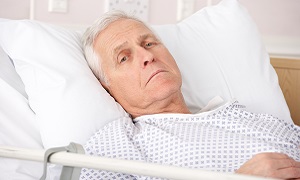Best Doctors in India for Sigmoidoscopy
Best Hospitals in India for Sigmoidoscopy
- City: Bengaluru, India
Hospital Highlights:
- Fortis Hospital Bannerghatta, Bengaluru was established in 2006.
- The hospital is a 276 bedded multi-specialty tertiary care facility.
- The hospital specializes in cutting-edge medical technology and dedicated patient care services.
- The hospital is equipped with state-of-the-art technologies like trans-radial angioplasty, trans-abdominal cardiac surgery, and computerized TKR navigation surgery.
- The hospital provides specialty medical services in cardiology, cardiac surgery, orthopedics, neurology, neuro-surgery, GI, and Minimal Access Surgery (MAS).
- City: Chennai, India
Hospital Highlights:
- Fortis Malar was established in 1992 and was formerly known as Malar Hospital.
- The hospital specializes in cutting-edge medical technology and dedicated patient care services.
- The hospital is multi-specialty, tertiary care facility with 180 beds.
- The hospital offers comprehensive medical care in specialties such as cardiology, cardio-thoracic surgery, neurology, neurosurgery, orthopedics, nephrology, gynecology, gastroenterology, urology, pediatrics, and diabetes.
- City: New Delhi, India
Hospital Highlights:
- Established in 1996, Pushpawati Singhania Research Institute is one of the top hospitals in the NCR region, as well as one of the top facilities in India for gastroenterology. The hospital is one of South Asia’s first institutes in medical and surgical treatment for diseases related to digestion.
- The hospital is equipped with state-of-the art facilities coupled with the latest equipment as well as renowned consultants from various parts of India as well as other parts of the world.
- City: New Delhi, India
Hospital Highlights:
- State-of-the-art technology and devoted healthcare professionals have been brought together under one roof at Venkateshwar Hospital to provide genuine medical care. The hospital’s professionals work together as a team to deliver the best possible treatment to their patients, using the most sophisticated equipment and information technology.
- Venkateshwar Hospital’s mission is to attain global excellence in healthcare by employing evidence-based, ethical clinical practices and cutting-edge technology by a team of highly skilled experts.
- City: New Delhi, India
Hospital Highlights:
- Sir Ganga Ram Hospital, New Delhi is known to provide the latest medical procedures with the latest technology in all of its units.
- The hospital has a team of reputed doctors, nurses, and healthcare professionals that ensure that patients receive quality care at affordable costs.
- Staffed with a team of highly qualified doctors, dedicated nurses, and paramedical and non-medical staff, the hospital aims to lead in healthcare delivery, medical education, training, and research.
- As per the vision of the founder, the hospital also provides free treatment to the economically weaker sections of society.
- Sir Ganga Ram Hospital also provides training to young doctors under the Diplomate in National Board(DNB) program. The DNB program at the hospital was started in 1984 and it is known for currently running the maximum number of DNB specialties in the country. It also has the distinction of having the first bone bank in India.
- City: Kerala, India
Hospital Highlights:
- Established in 2019, Apollo Adlux Hospital is the first Apollo Hospital in Kerala and the 73rd hospital owned by Apollo Group in India. With the state’s most advanced, comprehensive healthcare infrastructure and cutting-edge technologies, Apollo Adlux Hospital stands as an example of medical excellence in Kerala.
- With over 34 multi-specialty departments, the hospital believes in providing the best quality treatment to its patients at affordable rates, ensuring comfort at their difficult times.
- The 300-bed hospital is managed by a team of highly qualified and experienced experts who delivers exceptional hospitality to their patients and treats them with great compassion.
- With its affiliation with the Apollo Hospitals Group, the hospital aims in providing patients with top-notch healthcare services while also serving communities in Kerala.
- The hospital has good railway and road connections, and is conveniently close to Cochin International Airport.
- City: Gurugram, India
Hospital Highlights:
- Situated near DLF Cyber City, Gurugram, Narayana Superspecialty Hospital is one of the top medical facilities in the Delhi NCR region, catering to the needs of the people. Known for its commitment to quality medical care and patient service, the hospital is a state-of-the-art facility with planned and well-equipped sections, which includes a spacious OPD area as well as comfortable patient rooms.
- It is the closest super-specialty hospital from Indira Gandhi International Airport towards Gurugram, and also the nearest super specialty hospital from DLF Cyber City. It is also close to major residential areas in Gurugram.
- It is part of the renowned Narayana Health Group. Established in 2000, by Dr. Devi Shetty, a renowned cardiac surgeon, it has grown to be one fo India’s leading healthcare groups.
- City: Noida, India
Hospital Highlights:
- Fortis Hospital, Noida, stands as one of the oldest and most trusted healthcare institutions in the region, setting a benchmark for comprehensive medical care.
- As the second mega hub hospital in the Fortis Healthcare Group, Fortis Hospital, Noida, upholds a legacy of trust among more than 1.2 million patients. By integrating top-tier professionals with cutting-edge technology, the hospital delivers superior treatment across various medical disciplines.
- Specializing in advanced Neurosciences, Orthopedics, Kidney and Liver Transplant Programmes, Fortis Hospital, Noida has successfully performed over 1,500 transplants, solidifying its reputation as a leader in specialized medical interventions.
Sigmoidoscopy
Sigmoidoscopy is a test where your doctor examines the rectum and lower part of the colon. The colon is your large intestine and its lower part is known as the sigmoid colon. The sigmoid colon ends in your rectum, where the waste is collected before it leaves your body when you are having a bowel movement.
Sigmoidoscopy, which is also termed as flexible sigmoidoscopy, can help your doctor to look for ulcers, cancer, polyps or abnormal cells. In this procedure, typically tissues are taken as samples for checking for any abnormal changes in the cells.
Purpose
Sigmoidoscopy can help your doctor investigate possible causes of abdominal pain, changes in bowel habits, rectal bleeding, chronic diarrhea or any other problems related to the intestine.
If you are over 50 years of age, it puts you at average risk for colon cancer, which is why your doctor may recommend a flexible sigmoidoscopy exam every five years to screen for colon cancer.
Though sigmoidoscopy helps in screening for colon cancer screening, there are other options as well, which can allow your doctor to view the whole colon, such as colonoscopy.
Occasionally, sigmoidoscopy is preferred over colonoscopy as it takes lesser time, and doesn’t require an anesthetic. There are also lower risks.
Preparation
Before going through a sigmoidoscopy exam, it is important to empty your colon. If there is any residue in your colon, it can obscure the view of your colon and rectum during the procedure.
To empty your colon, it is important to carefully follow your doctor’s instructions. Your doctor might ask you not to consume any food the day before you undergo the exam. Instead, you can consume plain water, carbonated beverages, broth as well as tea and coffee without any milk or cream. The doctor may also ask you not to eat or drink anything after midnight the night before your exam.
Your doctor may ask you to take a laxative, which will be either in pill or liquid form.
You will also need to use an over-the-counter enema kit, typically a few hours before the exam, for emptying your colon. You might also be asked to take two enemas.
If you take medications or supplements, remind your doctor about them at least a week before the exam. You may need to temporarily stop the medications or adjust the dosages for some time.
Procedure
You’ll need to wear a gown and begin the exam lying on your left side on the exam table. Then you need to draw your knees toward your abdomen. Then the sigmoidoscope, which is a thin and flexible tube, will be inserted into your rectum. The tube has a light as well as a very small camera on the end, which helps images to be transmitted onto a monitor for the doctor to see. The tube also inflates your colon with some air, making it easier for your doctor to examine.
Please note that when the scope is moved or air is introduced, you might experience abdominal cramping or the urge to move your bowels.
This exam should take around 15 minutes. If biopsies are taken, it may require slightly more time. Usually, sedation and pain medications aren’t required. If a polyp is found, your doctor might recommend a full colonoscopy to examine the entire colon, as there might be other polyps present further up in the colon.
After the procedure
After the exam, you should be able to return to your usual diet and activities. However, you might experience mild discomfort after the exam. You might feel bloated or pass gas for some hours as the air is cleared from your colon. Walking should help relieve the discomfort.
You might also notice a little blood with your first bowel movement after the exam, for which there is no reason to worry. You can consult your doctor if you continue to pass blood or blood clots or if you experience persistent abdominal pain or a fever of 100 F or higher.
If your results are negative, that means your doctor hasn’t found any abnormalities in your colon. If you’re above fifty years of age, then you may be at average risk of colon cancer. So your doctors can recommend the exam again after five years.
If your results are positive that means your doctor found polyps or abnormal tissues in your colon. You might require additional testing, such as colonoscopy, depending on the findings. The abnormalities will be examined more thoroughly, biopsied or removed.










